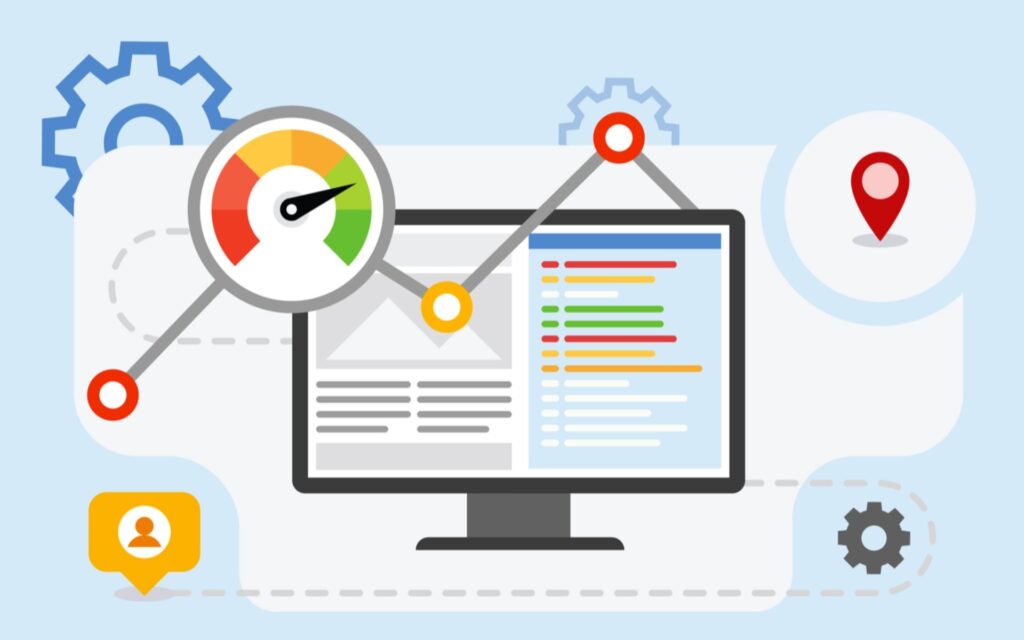4 Ways to Optimize for Google’s Page Experience Update

It’s not past time to plan for the Google Page Experience update even as it’s carried out. Figure out how to acquire an upper hand in Search.
Assuming that you have your finger on the beat of Google and its calculation transforms, you’ve probably seen a lot of information about the Page Experience update over this previous year.
The uplifting news? The update is at last here!
If you have yet to find time to optimize for Page Experience measurements and your rivals have, you may very well observe that they’re partaking in a rankings support you’re passing up.

In this section, you’ll find three critical areas of need that will assist you with getting ready for Google’s Page Experience update, as well as a few different issues on your plan for the day.
1. Work on Your Stacking Pace
The first of Google’s CWVs is biggest contentful paint (LCP), which alludes to the biggest and most significant piece of content on a page.
This measurement will decide how rapidly your page delivers its generally significant substance so that clients can see it.
There are various ways of upgrading for LCP. You can enhance your server since lazy reaction times can be connected to slow servers once in a while.
Accelerating a server might include running some exhibition direction, so the server turns up a static page when mentioned instead of building the page each time somebody taps on it.
Other website page parts that can dial back LCP is stacking incorporate pictures, recordings, and block-level components with text highlights.
Assuming these things on your pages are toward the top, the more slowly they load, the slower your LCP.
To fix these things, you’ll have to pack your pictures and text documents, store specific resources, and preload a portion of your components.
2. Work on Your Intuitiveness
The second CWV cis previously input delay (FID). That is the time it takes for clients to have the option to connect with a component they’ve clicked, like a connection or button.
In Google’s eyes, your FID ought to plan to be more limited than 100 milliseconds. In any case, we should discuss what that implies.
Perusers are no question acquainted with pages that keep them standing by everlastingly after they’ve tapped on a component to go to another page, alter a shopping basket, and so forth.
Indeed, that could be better for clients. However, for what reason is it in any event, occurring?
It’s fundamentally because the program is excessively occupied with different errands, for example, breaking down and completing a full JavaScript document.
We need to zero in on clients’ most memorable connections with a page, meaning how long it requires to stack.
Similarly likewise with meeting another person, initial feelings matter. If clients know every step of the way that your site is slower than a snail, they’ll likely leave and not return.
Yet, a solid initial feeling – a page that heaps rapidly – will go far toward expanding client commitment with that page in general.
That is the reason FID is such a significant measurement.
How would you fix it? It will rely upon your particular site.
Use instruments like PageSpeed Experiences to perceive how you’re doing and where you can move along.
This is some essential web-dev stuff. You’ll need to investigate sharing long assignments, minifying JavaScript, and focusing on script stacking so the main components are accessible to clients first.
3. Work on Your Format Shift
At last, we have the third CWV, total design shift (CLS). It’s a proportion of how much your page’s substance format moves around while it stacks.
You’ve likely encountered this issue, as well.
You’re trusting that a page will stack entirely and go to tap on something to find that one more component stacked on the page, thus pushing your ideal feature toward another path.
Subsequently, you tapped on something you didn’t need, similar to a promotion or even a “Submit Request” button.
That makes for a terrible client experience, and it’s why CLS matters to the point of being viewed as a fundamental component of page insight.
How might you fix this to exploit the rankings support CWVs can give?
You want a CLS score of 0.1 to “pass” Google’s test. That is the most extreme Google needs to see.
Any higher, and your site pages are reasonably moving a lot. Google considers a score of 0.25 to be poor.
In the event that you’re utilizing a WordPress site, you’ll presumably see that the accompanying components are causing your CLS:
• Dimensionless pictures and recordings.
• Dimensionless advertisements and other installed objects.
• Movements and other mighty satisfied.
• Glimmers of unstyled text.
Fixing CLS applies, for the most part to versatility since Google focuses on a portable first, because cell phones have more vulnerable processors and more modest viewports.
How will you need to dispense with that format? It relies upon what’s causing it, yet assuming that we take two models from a higher place:
• Programs won’t know how to space pictures and recordings without aspects, meaning the regions where they will ultimately be will probably change as page loads. You can secure this by adding explicit elements to your pictures and recordings.
• Then, regarding blazes of unstyled text, you should preload your text styles. That advises programs to stack your text styles as fundamentally important components — in the principal significant paint. You will not have any bumping textual style changes that will cause aggregate design shifts.
4. Other Page Experience Components to Remember
Center Web Vitals aren’t the main things you want to look into to streamline your webpage for the Page Experience update.
Take portable ease of use.
Google will currently pass judgment on each site by its versatility, particularly seeing issues, for example, small text sizes and the utilization of Blaze media, which the present cell phones need to be revised.
There’s additionally the question of the Page Experience report in the Google Search Control center.
This is a breakdown of how your site is performing for the page experience update, yet what many site proprietors are talking about, they need to see more information.
Google has affirmed that an unfilled report implies there isn’t an adequate number of decisive information to say for sure how your site is performing.
Regardless of whether you have good traffic, the response is most likely that you need more traffic — and for that traffic to create applicable information — assuming you believe the report should populate.
Google needs to see a decent client experience in natural substance as well as with publicizing, too. Check and guarantee that the advertisements on your site are not interruptive or diverting.
Furthermore, remember your site should be secure to do well by the Page Experience update.
Unreliable HTTP doesn’t cut it any longer. Clients need to realize their information is secure with you on your site — and Google has to know it, as well.
The Page Experience Update Is Here, So Get Going
There’s a ton to oversee regarding your Center Web Vitals and page insight, yet by the day’s end, everything unquestionably revolves around conceiving the best client experience.
If you have yet to cut out time at this point to examine and advance these components, you’ll believe you should do as such quickly.
In any case, don’t overreact. You will only be algorithmically punished for falling in line with all CWVs and Page Experience components.
This update is a kind of sudden death round, as per Google. On the off chance that any remaining things are viewed as equivalent, offering a superior not set in stone by the above measurements could give you the edge.
What’s more, assuming that you see rankings drop, it’s not because you’re being rebuffed. Your immediate rivals are focusing on these advancements, and you’re not.
That is a motivating force to get going!

